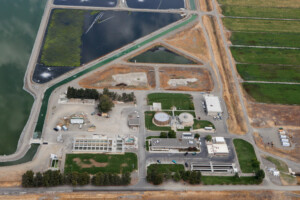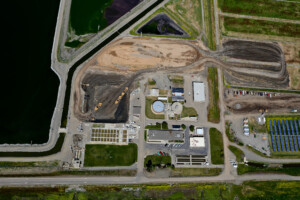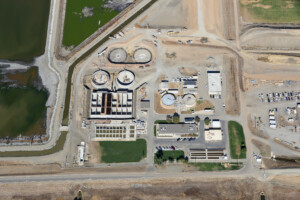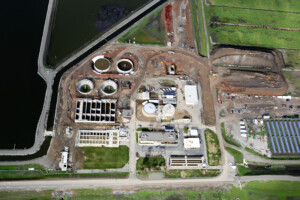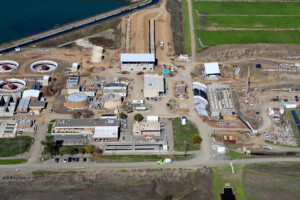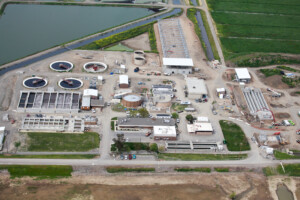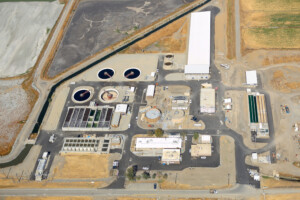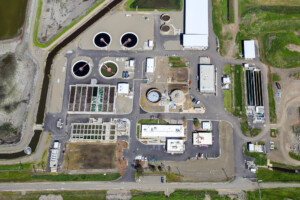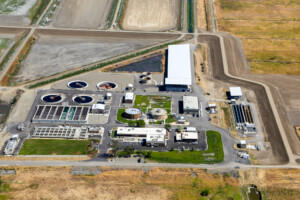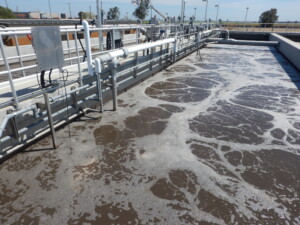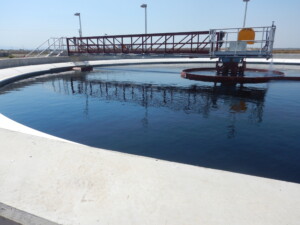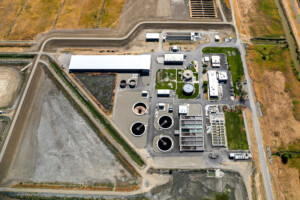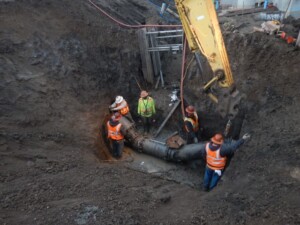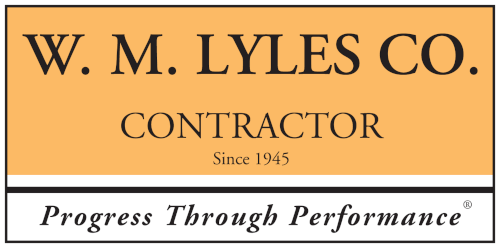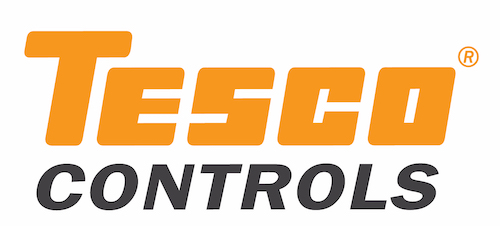Challenge
The City of Davis’ existing treatment plant relied on a combination of conventional and natural processes to provide treatment of wastewater generated within the city and two unincorporated areas (i.e., North Davis Meadows and El Macero). In anticipation of more stringent effluent requirements for continued surface water discharge, the City of Davis commissioned a wastewater treatment master plan to determine the existing facility’s ability to meet foreseeable future requirements. Two primary conclusions were reached as a result of this effort:
- Continued discharge at the existing location was the preferred long-term disposal strategy, and this strategy would require the WWTP to be upgraded to provide tertiary treatment.
- The natural system-based secondary treatment process produced variable effluent quality that was not conducive to meeting strict effluent limits. Consequently, the secondary process, in its current configuration, had reached the end of its useful life.
In October 2007 the Central Valley Regional Water Quality Control Board (Regional Board) issued a new discharge permit to the City. This permit confirmed the conclusions drawn in the master plan with respect to upgrades needed for continued surface water discharge. The permit also imposed a compliance deadline of October 25, 2017, for completing the required improvements.
Approach
The City of Davis solicited proposals from selected firms to design, construct, start up, test, transition to City operation, and obtain designated governmental approvals for secondary and tertiary improvements and other ancillary work at the city’s existing wastewater treatment plant. This was done through a two-step RFQ/RFP procurement process.
By using a design-build (DB) project delivery approach, the City expected to secure benefits for its customers. These benefits included: cost savings, integration of design and construction to develop a better and more reliable facility, reducing the risk to the City by contracting responsibility to the DB team, incorporation of innovative technology, and competitive selection of the best DB team.
Priorities for this project included:
- Affordability. The project needed to be built below the City’s budget to reduce life cycle costs and maximize the value to its customers.
- Innovation. The project needed to maximize the ability to meet future regulatory requirements while minimizing ratepayer impacts.
- Sustainability. The project needed to reduce the impact on nonrenewable resources while maintaining the legacy of a natural system-based treatment.
- Time. The project needed to be completed by the NPDES compliance date of October 25, 2017.
On this project, the City committed to partnering a formal management process in which all parties to a project voluntarily agreed at the outset to adopt a cooperative, team-based approach to project development and problem resolution to eliminate—or at least reduce—conflicts, litigation, and claims.
Results
The project approach began with developing an understanding of the project drivers and was followed by identifying challenges and developing the most advantageous solutions for the City of Davis. These individual project elements were combined in an overall scope of work and proposed plan to meet the City’s needs.
Current Treatment Improvements. The most immediate challenges had to be solved to provide capacity and meet new permit limits.
- Robust secondary treatment – Added MLE process—redundancy enhanced by four aeration basins and four clarifiers.
- Title 22 compliant effluent quality – Disk filters and all new chlorine contact now reliably meet Title 22 filtration and disinfection standards.
- Ample emergency storage – Provided approximately 50 million gallons of emergency storage while minimizing levee costs.
- Efficient solids handling – Dewater digested sludge with belt presses and dry sludge with a weather-protected and labor-reducing solar greenhouse.
Future Treatment Improvements. A good design needed to anticipate and yet be practical in trying to best accommodate future needs.
- New nutrient permit limits – Convert to a 4-stage Bardenpho process for enhanced nitrogen removal and add CEPT to the primaries and coagulants to the disk filters to achieve low effluent phosphorus levels.
- Reserve space for future expansion – Reserve space for a 50% facility expansion and for future lime silo and lime addition to the primary effluent due to water supply changes.
Other Long-Term Drivers. Beyond the need for treatment, there were personnel, sustainability, energy efficiency, and other long-term considerations that required thoughtful implementation.
- Personnel improvements – Expanded existing operations and maintenance buildings to provide essential facilities for plant operations.
- Energy efficiency – Provided a flat hydraulic profile, high-efficiency turbo blowers, real-time automated DO control, and state-of-the-art fine bubble diffusers to minimize energy consumption.
- Maximize sustainability – Repurposed and reused existing structures to maximize value and minimize off-site concrete; maximized use of the plant’s renewable energy and biogas.
- Cost-effective flood protection – Provided a space-efficient treatment plant design and kept the costs of the new levee encirclement to a minimum.
Transition Management. Moving from pre- to post-construction raised a host of practical concerns, from maintaining existing operations to performing tie-ins and having a solids plan to manage construction logistics.
- Maintained existing operations during construction – Built completely separate new plant to avoid impacts on operations and simplify startup.
- Meet schedule – Had new plant completed and fully commissioned before the required end date of October 2017.
Recognizing the City’s interest in undertaking the WWTP STI project in a sustainable manner that ultimately improved the resiliency of the facility, improved environmental stewardship, and contributed to community quality of life, AECOM/WML’s design and construction approach achieved Silver Envision Certification. Among the sustainability features included were reductions in potable water usage, management of local stormwater, restoration of disturbed soils, reduction in the amount of excavated materials taken off-site, improvements in site accessibility and safety, and reductions in noise, vibration, and light pollution.
Other WCDA member involved: Tesco Controls (design-assist subcontractor)
“The AECOM/Lyles JV provided a very collaborative approach to the exceptionally complex task of converting from a land-based treatment system to the highly technical secondary and tertiary treatment system using the design-build process. Projects such as this that convert from one treatment process to a completely different type of process can be exceptionally complex to design, construct, initiate startup, and operate. However, the partnership between city staff and the design-build contractor and its subcontractors provided skill sets that minimized difficulties and enabled a smooth transition while never exceeding effluent limitations.”
—John Alexander, Wastewater Division Manager, City of Davis
“The city has benefited immensely from how AECOM and W. M. Lyles Co. successfully integrated their managers, engineers, and construction professionals into an efficient, integrated single team. I would highly recommend their team for future projects.”
—Michael Lindquist, PE, Program Manager, City of Davis

